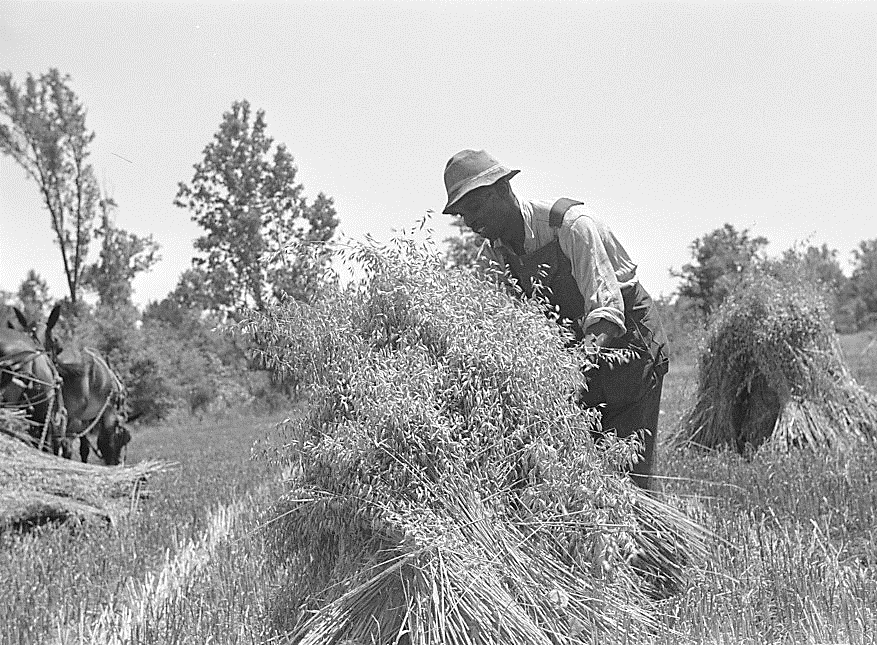Many folks will recognize the colorful flowing Great Depression farm art of Thomas Hart Benton. American regionalist painters like Benton and Marion Greenwood sought to portray the tensions of rural social and economic change wrought by the Great Depression and global farm commodity markets. Their British contemporaries included writers George Ewart Evans and Lady Francis Donaldson, and renowned artist-author Claire Leighton. Themes of sustaining values amidst economic dislocation were also subjects of the stirring 1930s harvest photography of Federal Security Administration photographers Ben Shahn, Marion Post Wolcott, and Arthur Rothstein.
Ben Shahn, Wheat Field (c. 1958), From Ecclesiastes or, The Preacher (New York, 1971), 8 ⅞ x 12 inches
Rural change in the wake of world wars, the rise of consumerism, and environmental challenges have been explored more recently in essays and stories of conservationists like Russell Lord and Wallace Stegner. As founder of Stanford University’s Writer’s Workshop, Stegner mentored a new generation of influential regionalist authors including Edward Abbey, Scott Momeday, and Wendell Berry. Traditional themes of deliverance drawn from the Bible have been expressed anew in such modern art as Chagall’s Ruth Gleaning the Grain (1960), Ben Shahn’s Wheatfield—Ecclesiastes (1967), and recent operatic works by Lennox Berkeley and James Niblock. One of the founding “mystic artists” of the abstract Northwest School, Mark Tobey (1890-1975) painted After the Harvest (1970) and The Harvest’s Gleanings (1975) with the small, overlapping brush strokes that suggest the Oriental influence of his spiritual beliefs.
The reciprocating influences of agrarian art and literature offer important understandings to this contrasting complex of cultural ideas involving fulfillment and struggles with rural labor, individual and cooperative endeavors, and the facts and fictions of life on the land and impacts of technology. Progressive change to promote well-being of the countryside and future generations can be unwisely limited by amnesia as well as nostalgia. Amnesia is forgetting about cultural legacies bequeathed by ancestors and society, while nostalgia appeals to life in some halcyon past often overlook very real challenges of such times. We remember places, mark lines and verses, and appropriate elders’ counsel for synergy and solidarity to foster human flourishing and to safeguard natural resources for future generations. For these reasons aesthetic understanding through agrarian art and literature remains an essential discipline.





